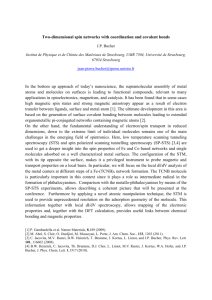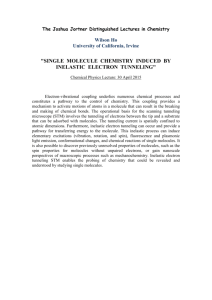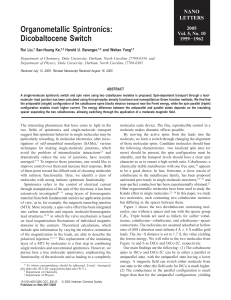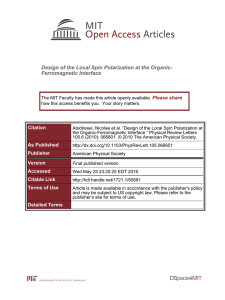Single Molecule Magnet Investigated with Scanning Tunneling
advertisement
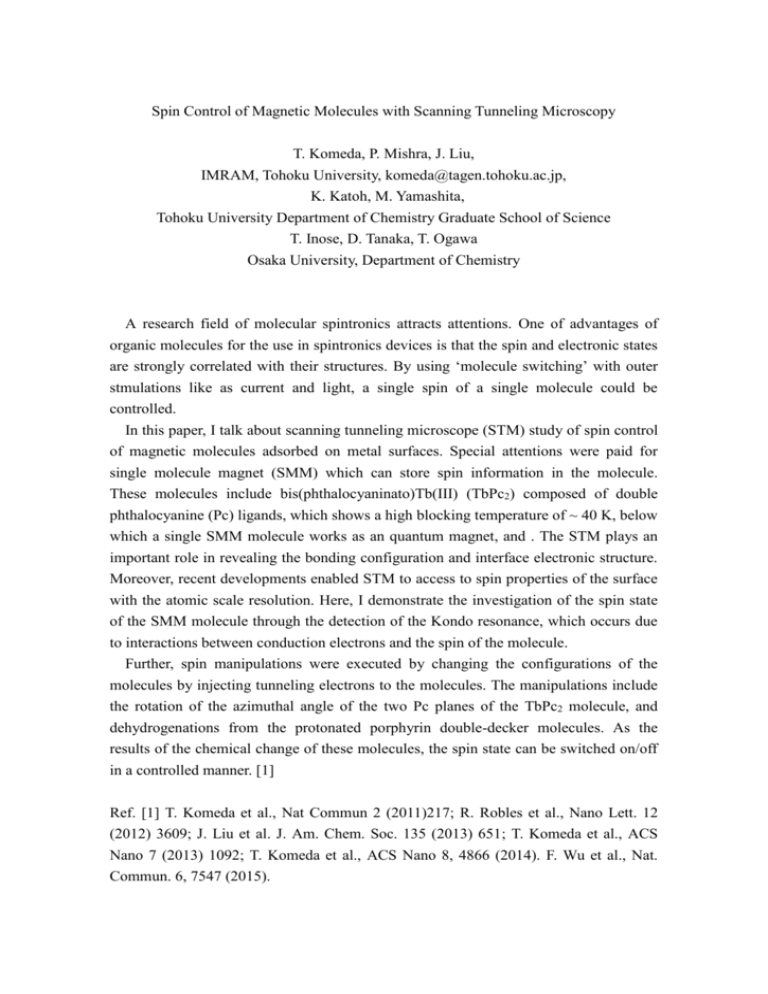
Spin Control of Magnetic Molecules with Scanning Tunneling Microscopy T. Komeda, P. Mishra, J. Liu, IMRAM, Tohoku University, komeda@tagen.tohoku.ac.jp, K. Katoh, M. Yamashita, Tohoku University Department of Chemistry Graduate School of Science T. Inose, D. Tanaka, T. Ogawa Osaka University, Department of Chemistry A research field of molecular spintronics attracts attentions. One of advantages of organic molecules for the use in spintronics devices is that the spin and electronic states are strongly correlated with their structures. By using ‘molecule switching’ with outer stmulations like as current and light, a single spin of a single molecule could be controlled. In this paper, I talk about scanning tunneling microscope (STM) study of spin control of magnetic molecules adsorbed on metal surfaces. Special attentions were paid for single molecule magnet (SMM) which can store spin information in the molecule. These molecules include bis(phthalocyaninato)Tb(III) (TbPc2) composed of double phthalocyanine (Pc) ligands, which shows a high blocking temperature of ~ 40 K, below which a single SMM molecule works as an quantum magnet, and . The STM plays an important role in revealing the bonding configuration and interface electronic structure. Moreover, recent developments enabled STM to access to spin properties of the surface with the atomic scale resolution. Here, I demonstrate the investigation of the spin state of the SMM molecule through the detection of the Kondo resonance, which occurs due to interactions between conduction electrons and the spin of the molecule. Further, spin manipulations were executed by changing the configurations of the molecules by injecting tunneling electrons to the molecules. The manipulations include the rotation of the azimuthal angle of the two Pc planes of the TbPc2 molecule, and dehydrogenations from the protonated porphyrin double-decker molecules. As the results of the chemical change of these molecules, the spin state can be switched on/off in a controlled manner. [1] Ref. [1] T. Komeda et al., Nat Commun 2 (2011)217; R. Robles et al., Nano Lett. 12 (2012) 3609; J. Liu et al. J. Am. Chem. Soc. 135 (2013) 651; T. Komeda et al., ACS Nano 7 (2013) 1092; T. Komeda et al., ACS Nano 8, 4866 (2014). F. Wu et al., Nat. Commun. 6, 7547 (2015).




